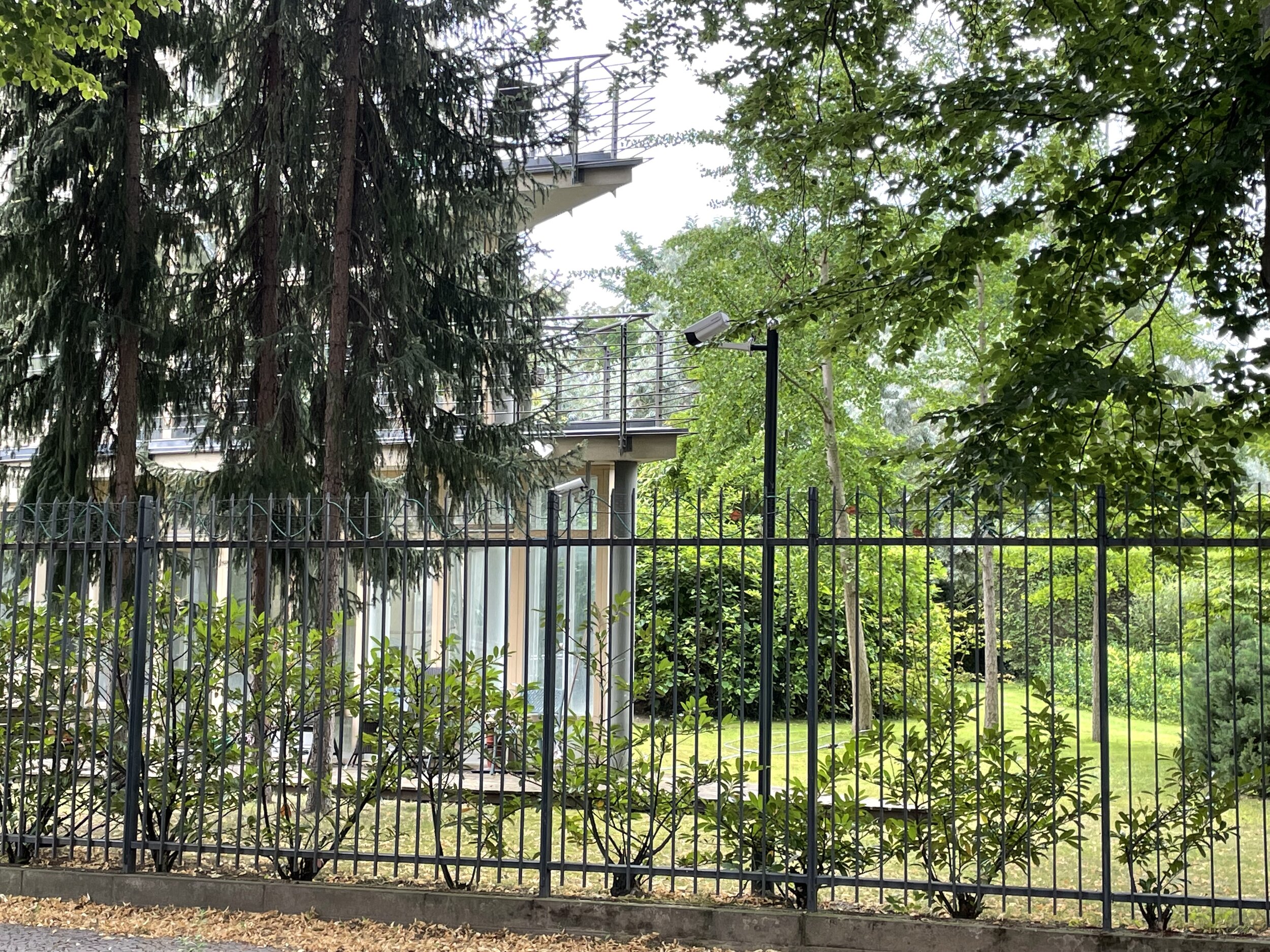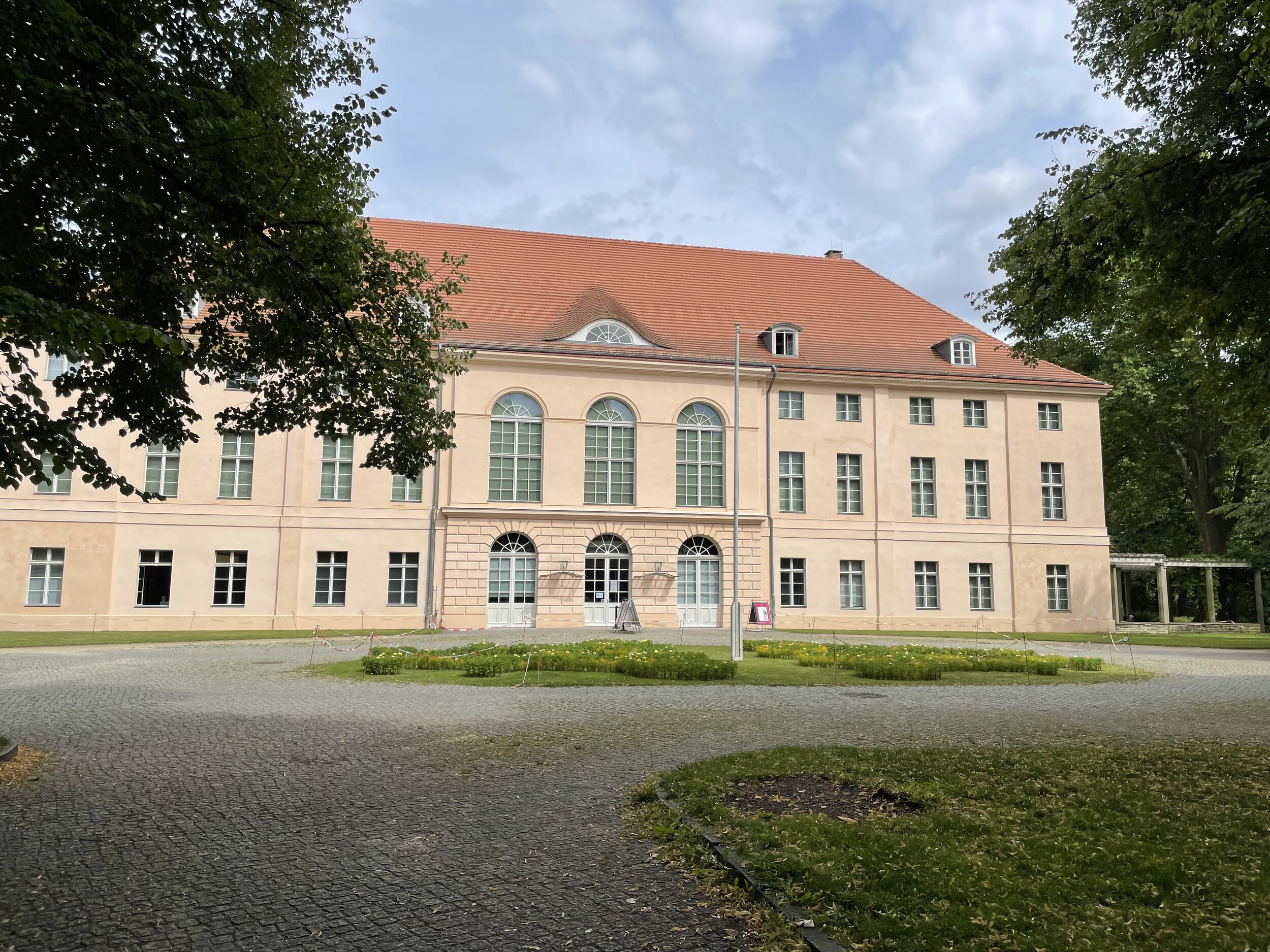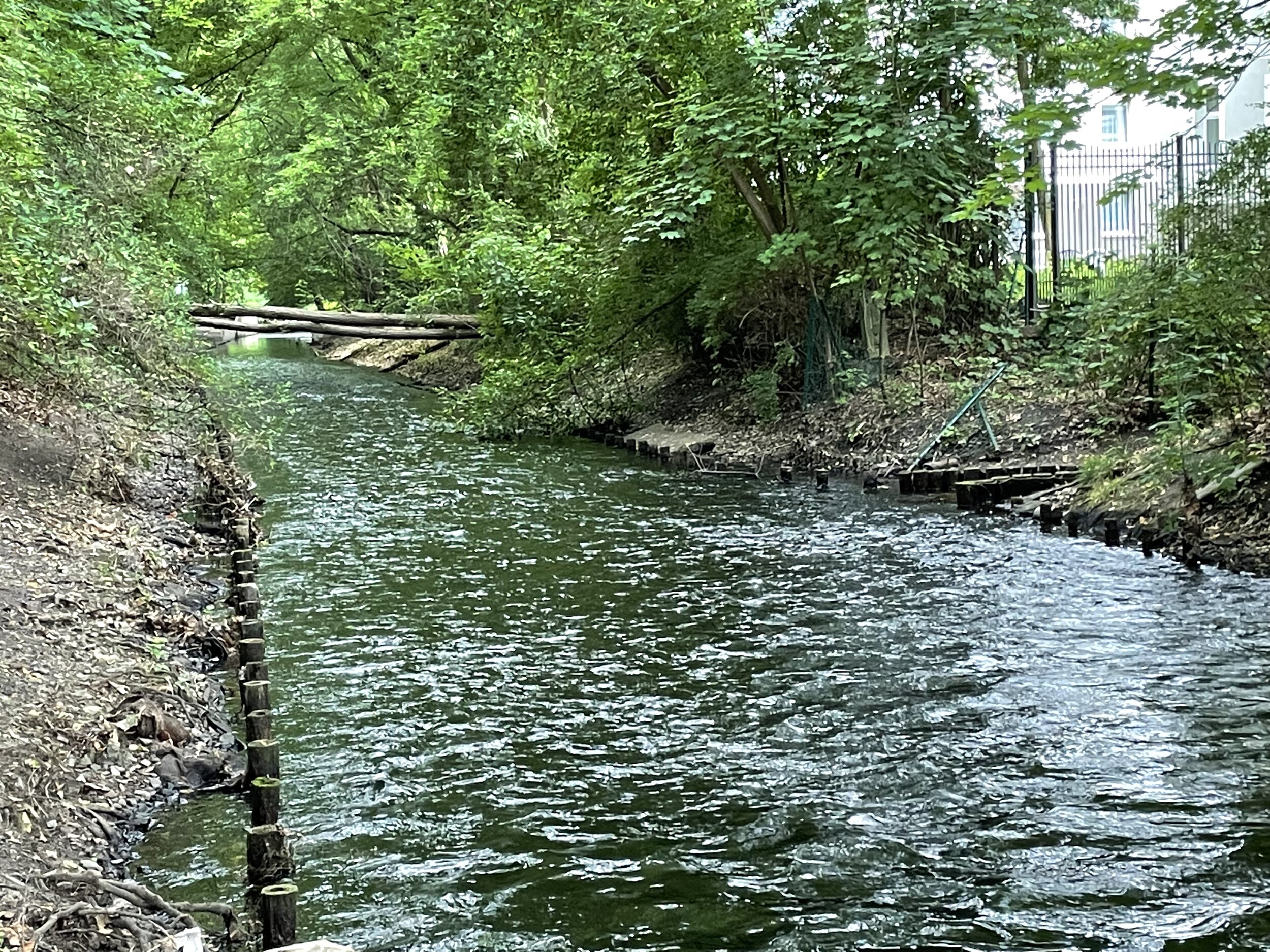Sophienstraße 21
A while back we visited Niederschönhausen, the town (then) outside of Berlin where authors Arno Holz and Johannes Schlaf formed a bohemian community of two and fomented a literary revolution in the form of Papa Hamlet. Although set in Norway, that book was very much informed by their familiarity with Berlin’s less desirable residential areas. An even more acute study of this world comes to us in another of the duo’s texts included in our edition of Papa Hamlet, the 1890 short story ‘Die papierne Passion’ (‘The Paper Passion’). It offers not just a compelling social study, but a unique record of a building that, remarkably, is still around.
The original publication of ‘Die papierne Passion’ by Arno Holz and Johannes Schlaf
The story was inspired by Johannes Schlaf’s time as a student when he lodged in the Scheunenviertel (‘Barn Quarter’), immediately north of Berlin’s historic heart, before departing to share Holz’s sylvan seclusion in Niederschönhausen. At the time (the late 1880s) the Scheunenviertel was already beset by overcrowding, with constant new arrivals, particularly Jews fleeing persecution in eastern Europe (more from Slow Travel Berlin). Like so much of Berlin, this neighbourhood was dominated by buildings arranged around courtyards, with a typical configuration offering a front block facing the street, a rear block behind it separated by a courtyard, which was often also framed by side blocks. Depending on the depth of the plot there might be up to four successive courtyards leading away from the street – often gloomy spaces which retained more noise than light.
A view of the Scheunenviertel
Each complex was a social microcosm; the apartments on the lower floors of the front block were generally reserved for the better off, with conditions deteriorating the higher and further back you went. Once you arrived at the top of one of the rear blocks you might well find apartments housing multiple families or a revolving cast of lodgers. In the most extreme cases the same bed would be occupied by different people working different shifts throughout the day. Well into the 20th century, these overcrowded spaces were notorious for appalling health and social conditions. And often the buildings weren’t solely reserved for residents. The Berliner Mischung (Berlin mix), sometimes known as the Kreuzberger Mischung, named for another working-class district on the other side of the River Spree, was a mode of urban development at the time which crammed residential, commercial, artisanal and even industrial usage into the same space with predictably poor outcomes for the people who called them home.
An image by Heinrich Zille depicting living conditions in Berlin around the end of the 19th century
Sophienstraße 21 is a prime example of this. Right behind the Sophienkirche, Berlin’s only remaining Baroque church, it presents a genteel front to the street which once concealed a teeming world of apartments, workshops and a tavern, as well as a sewing machine factory. Here Johannes Schlaf lived as a lodger in a household watched over by the loud, vulgar Mother Abendroth who ceaselessly bellowed her grievances in broad Berlin dialect. She appears unencrypted in ‘The Paper Passion’, while the student Haase, sensitive and ill-at-ease, is likely a stand-in for Schlaf himself.
An 1882 map showing Sophienstrasse 21 and the Sophienkirche
Considering Berlin’s history it is truly fortunate that we have such a rich, closely observed literary account of a location that we can still visit today. Now known as the Sophie-Gips-Höfe, this is the very exemplar of post-reunification gentrification, with some avant-garde landscaping, walls adorned with text (but no graffiti), expensive apartments, media companies, an architectural practice, a high-end gallery, a French bookshop and a bakery (many Berliners will remember this as the former home of Barcomi’s Deli). With a bit of guesswork, here are some extracts from the text in the settings that inspired them (these photos were taken in late summer so as well as the grime, crowds and industrial activity you’ll have to imagine the snow for yourself).
‘A small Berlin kitchen, up four flights of stairs, around Christmas time …’
‘Meanwhile there is an occasional low rattling of window panes amid the muffled clatter of the factory in a rear block beyond the courtyard …’
‘From four storeys below in the cellar tavern comes the thin sound of an accordion …’
‘Another heavy, iron-laden wagon has just rattled through the gateway to the courtyard …’
‘The thin, monotonous peal from the Sophienkirche steeple can now be heard from the street …’
‘It’s the evening service. In between, from the bel étage below, a piano …‘
‘Beyond the low, snow-covered side block across the way the factory sends dark smoke into the winter sky, aswarm with fine powdery snow. Its numerous windows gaze yellowy-red through the flurry. The large black steel rails, belts and wheels in the bright squares move back and forth continuously. There is a snuffing and groaning in regular bursts …’
‘Heavy, dull blows from the courtyard. Between each, a shrill woman’s voice …’
‘Outside windows warped with frost are being thrown open, a few women are calling down into the courtyard, there is already a confused frenzy of buzzing and shouting down below …’
‘The women scream, a thick knot of people has gathered in front of a ground floor apartment. The whole courtyard is in uproar …’
‘A black knot of people comes through the front door. In their midst is a man, staggering; they are dragging him out …’
‘The factory chimney looming tall and black into the dirty grey snowy sky casts a red flame fluttering high into the whirling white-grey flakes …’
‘The Paper Passion’ by Arno Holz & Johannes Schlaf was originally published in German as ‘Die papierne Passion’ in the anthology Neue Gleise. Gemeinsames von Arno Holz & Johannes Schlaf by F. Fontane in Berlin, 1892. This translation © 2021 James J. Conway, included in Papa Hamlet.














































